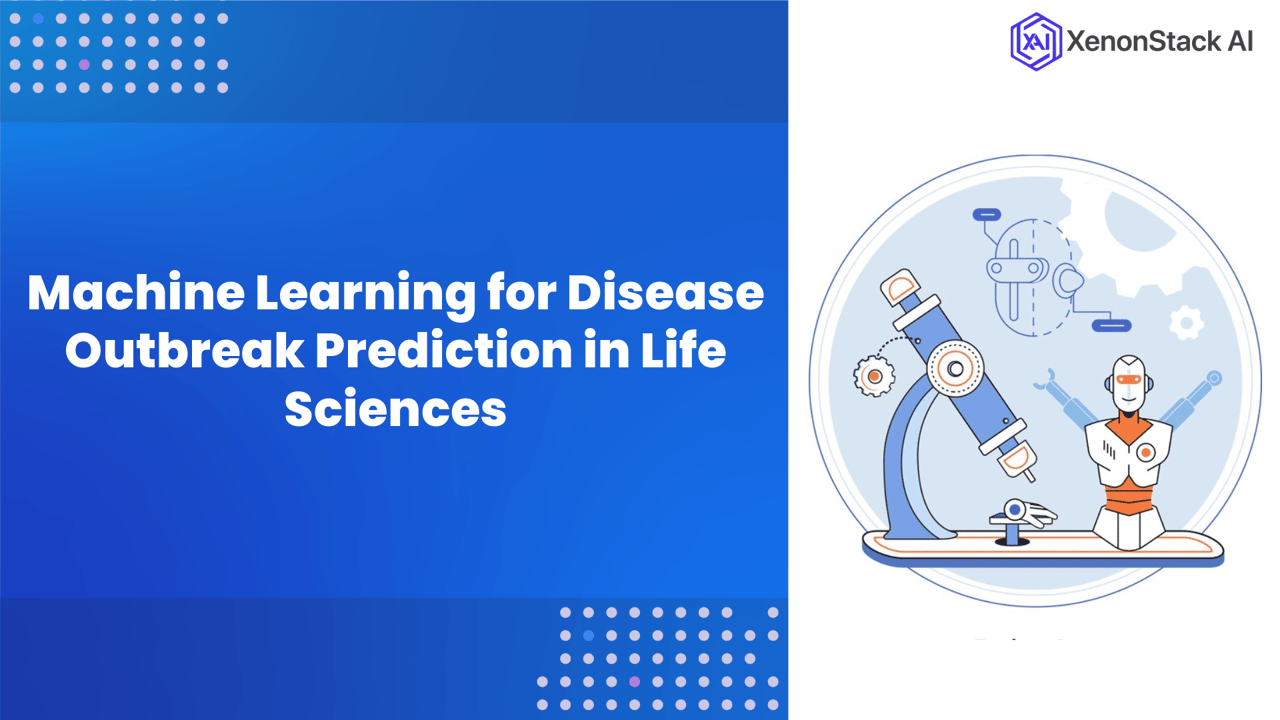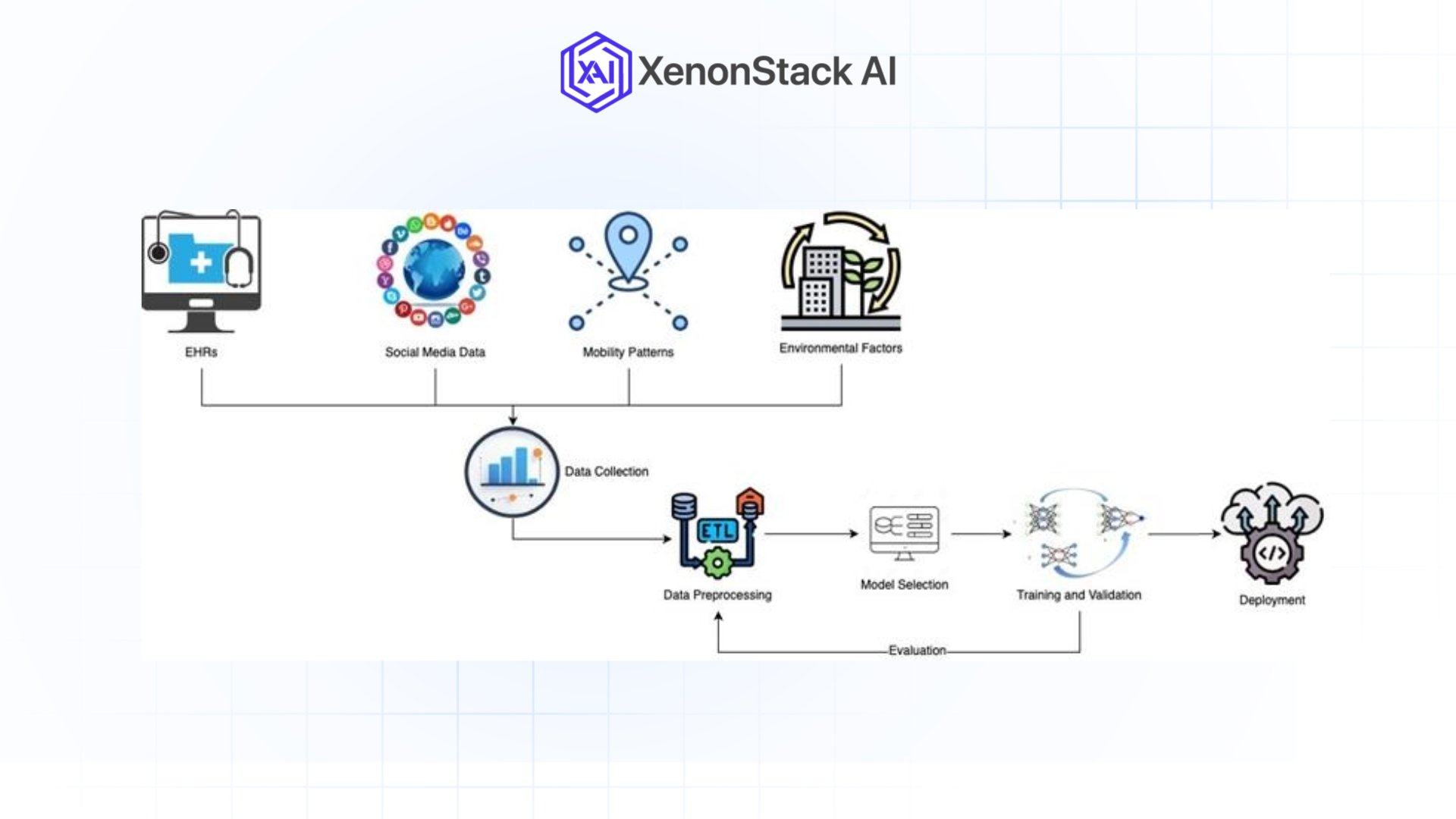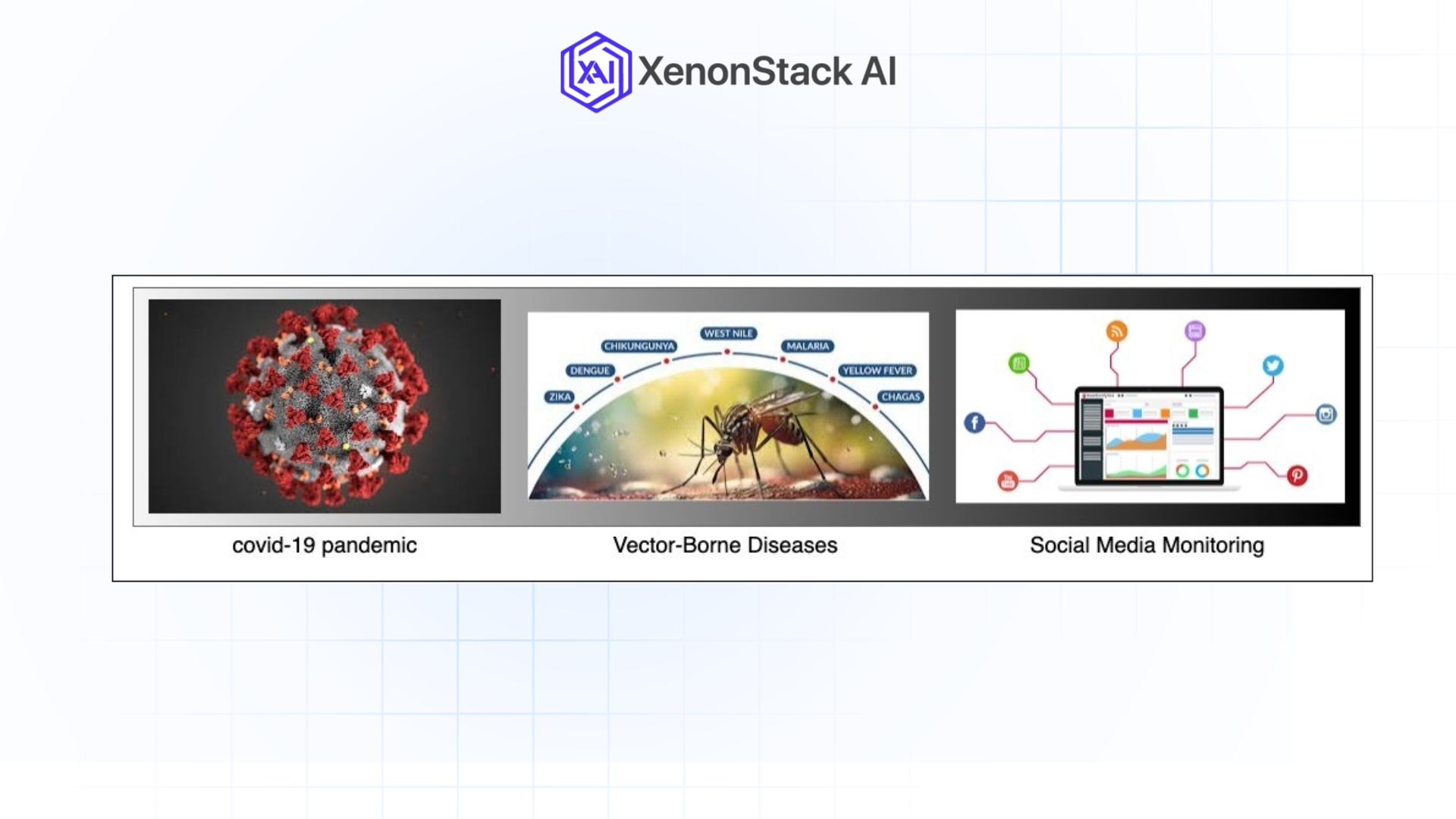
Forecasting disease spreads has since become an indispensable part of contemporary life sciences. Fortunately, with the arrival of machine learning (ML), researchers and healthcare organizations have potent tools to detect symptoms, monitor the diffusion of diseases, and, in general, manage the effects of an epidemic. Machine learning provides more complex opportunities to work with vast amounts of data, identify trends, and make sophisticated predictive analyses, which is why it is critical in this area.
The Importance of Outbreak Prediction in Life Sciences
It is clear that disease outbreaks adversely damage public health and the economy. Timely identification and intervention are preventable; delays can cost human lives, healthcare facility finances, and international health. In the past, data collection and statistical methods were used to forecast probable outbreaks. While applicable, these approaches do not lend themselves well to handling unformatted or large numbers of dimensions of data.
Machine learning addresses these limitations by leveraging computational power to process diverse datasets, such as:
-
Electronic Health Records (EHRs): Hold patient’s signs and diagnostic information.
-
Social Media Data also captures peoples’ reactions and discourses on health threats.
-
Mobility Patterns: This information informs the movement of the population, which helps analyze the distribution of diseases.
-
Environmental Factors: The susceptibility of vector-borne diseases to temperature, humidity and precipitation changes.
Key Machine Learning Techniques for Outbreak Prediction
Supervised Learning for Historical Pattern Analysis
Supervised learning involves passing data through an algorithm after being classified in the past. Some algorithms applied in outbreak predictability include Random Forests and Support Vector Machine (SVM).
-
Example: A random forest can help allocate resources during flu seasons by comparing patients' symptoms and the probability of infection.
-
Strengths: High accuracy, especially when working with labelled datasets.
Unsupervised Learning for Anomaly Detection
The central figure of unsupervised learning is discovering anomalous patterns in data sets that are not specifically labelled. Outbreaks are handled by k-means clustering and DBSCAN (Density-Based Spatial Clustering of Applications with Noise).
-
Example: Monitoring the type of topics discussed on microblogs at a given time or day and relating the results to shocks in the health systems.
-
Strengths: Work well on unformatted and small data sets.
Deep Learning for Complex Data
Two popular deep learning algorithms, CNNs and RNNs, offer superior performance in big data procurement and analysis.
-
Example: Mobile report data is used to forecast COVID-19 case trends employing the Long Short-Term Memory (LSTM) networks.
-
Strengths: Handles complex patterns in genomic sequences, radiological images, and temporal data.
Architecture of an ML-Driven Outbreak Prediction System
Outbreak prediction through machine learning includes data acquisition, data preparation, feature extraction, model determination, and model assessment. Below is a simplified architecture diagram created using Mermaid syntax:
 Figure 1: Workflow diagram
Figure 1: Workflow diagram Stages in the Machine Learning for Outbreak Prediction
-
Data Preprocessing and Visualization
It also involves cleaning, transforming, and normalizing data before placing it for analysis in other operational processes.
Techniques include:
-
Handling missing values by imputation or removal.
-
Normalization is used to bring all objects to the standard size.
-
Overview of data distributions using histograms and scatter plots analyses in the hope of recognizing patterns.

It starts with data acquisition from various sources, including electronic health records, social media, Mobility, and Environment. This data is preprocessed to adjust and prepare the information needed for the analysis. During feature engineering, key predictor variables such as mobility patterns and weather information are named and selected as input. After that, proper machine learning models for the sequence are chosen, and models are trained and validated during the training and validation stage, including cross-validation Quantum Machine Learning.
Finally, the system examines the capability of the developed model using metrics such as precision, recall, and F1-score before it is deployed for real-time monitoring and prediction of disease outbreaks Machine Learning Systems.
-
Feature Selection and Engineering
The determination and tuning of some features enhance the mode's performance and the ease of understanding the results.
Key Predictors:
-
Social Mobility Patterns: Sort the population's mobility to understand disease transmission.
-
Environmental Factors: Study temperature, humidity and precipitation causes related to vector-borne diseases.
-
Symptoms from EHRs: Extract text-based data for early cluster detection.
Feature Selection Methods:
-
Principal Component Analysis (PCA): Helps control for many independent variables in a dataset.
-
LASSO Regression: He removes less relevant features, thus improving the model's simplicity.
-
Training and Validation
In the training process, we prepare data in a form used as input for ML models and then fine-tune it using hyperparameters.
-
Cross-Validation: Tools like k-cross validation help curb overfitting and make the model more generalizable.
-
Hyperparameter Tuning: It pays off to test several settings simultaneously, and methods like grid search do so systematically.
Evaluation Metrics for Outbreak Prediction
-
Precision and Recall
-
Precision: Measures the proportion of accurate positive predictions among all optimistic predictions.
-
Recall (Sensitivity): Assesses the model’s capability to pick isolated true cases from all actual outbreaks.
- F1-Score
Calculates a value that exhibits performance quality and comprehensiveness by integrating two key quantitative measurements: precision and recall.
- ROC-AUC
The ROC curve can depict the trade-off between sensitivity and specificity, and its AUC summarizes the curve.
-
Visualizing Performance: The trade-off between sensitivity and specificity is critiqued using confusion matrices, which summarise the model's true and false predictions.
Applications of ML in Life Sciences

-
COVID-19 Pandemic: They applied ML models to forecast case increases and resources and assess the consequences of containment measures.
-
Vector-Borne Diseases: Geographical and transport information was used to forecast dengue and malaria risks.
-
Social Media Monitoring: Social media sites like Twitter have alerted people about various issues related to public health.
Challenges and Future Directions
Challenges:
-
Data Quality: Insufficient data or skewed data, therefore, lowers the reliability of models.
-
Interpretability: High-level complex models, such as deep learning models, are often called “black box” models.
-
Scalability: Real-time outbreak prediction has high computational demand due to the need to embrace data volumetric.
Future Directions:
-
Hybrid Models: The advanced World Wide Web and Risk Analysis accurate prediction through supervised and unsupervised methodologies and deep learning techniques.
-
Explainable AI (XAI): Enhancing interpretability is necessary to ensure that organizations managing high-risk projects engender the trust of stakeholders.
-
Integration with IoT: Using connected objects for collecting real-time data.
Conclusion for Predict Disease Outbreak in Life Science
Prediction of epidemic outbreaks in the life sciences through machine learning transforms how healthcare organisations approach problem-solving. Despite these challenges, the continuing growth of computational methods and increasing integration of biology, mathematics, and computer science hold the potential for improved preparedness of public health systems for potential disease emergence. Applied to the world of healthcare, machine learning can, therefore, be used to save lives, defend communities, and improve the health security of nations.
Next Steps with Machine Learning
Talk to our experts about implementing machine learning systems to predict disease outbreaks in life sciences. Discover how industries and different departments leverage predictive models and data-driven insights to become proactive and responsive. By utilizing AI to analyze patterns in health data, environmental factors, and historical outbreaks, we can forecast potential disease outbreaks, optimize resource allocation, and improve public health responses.


